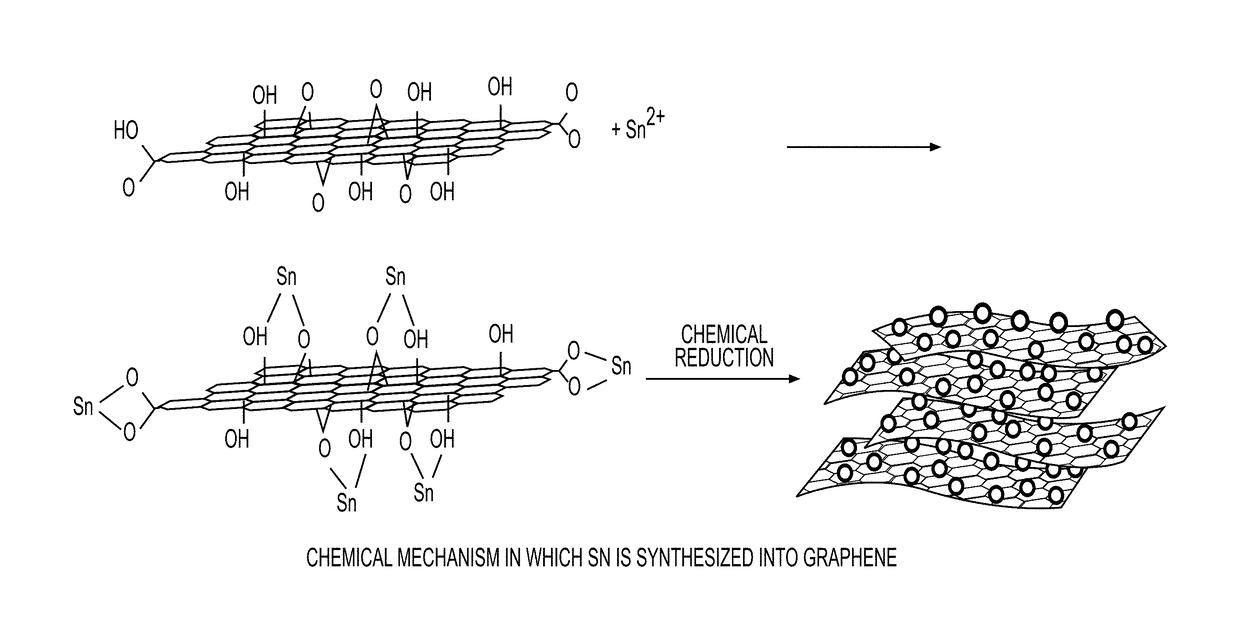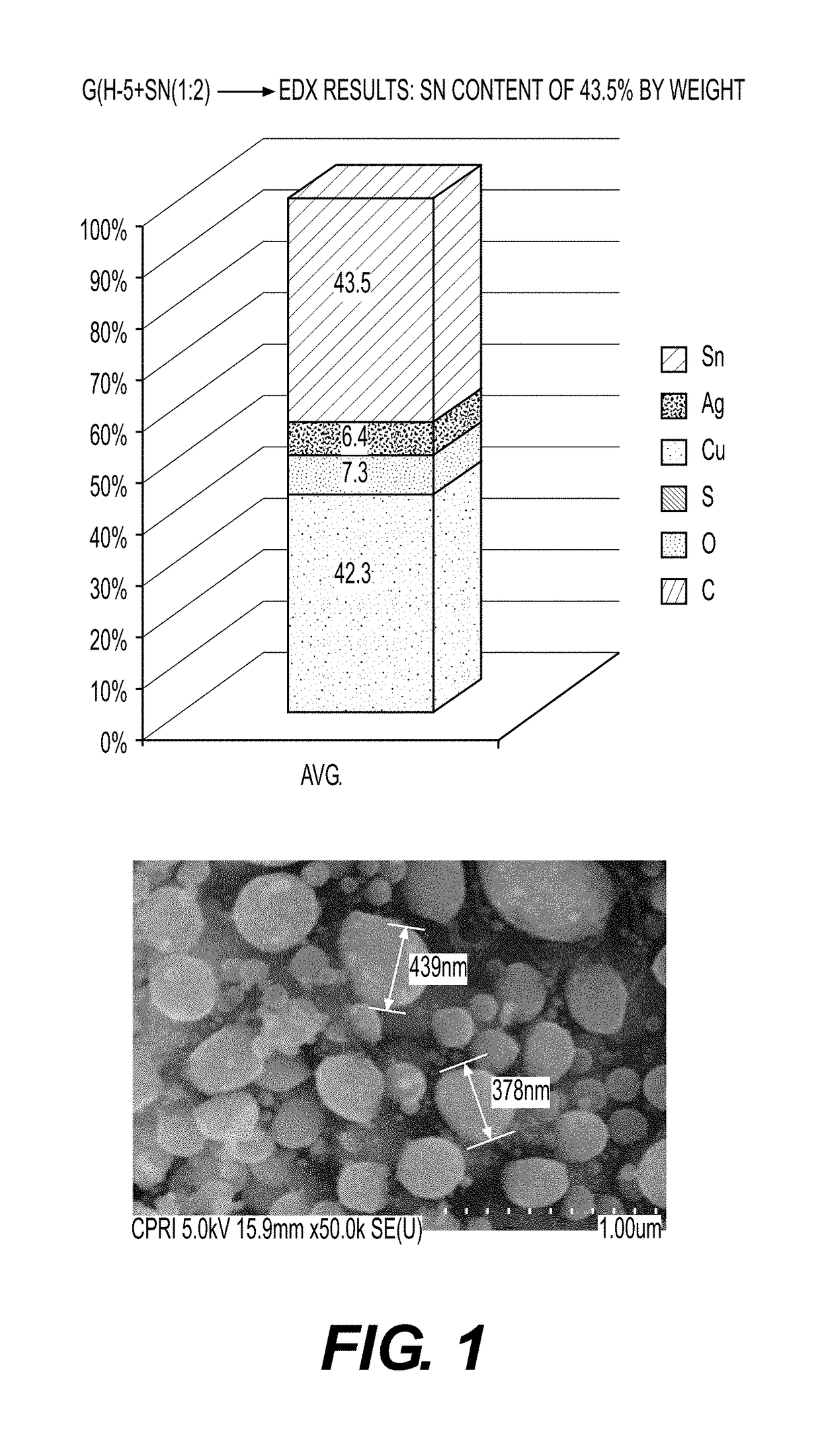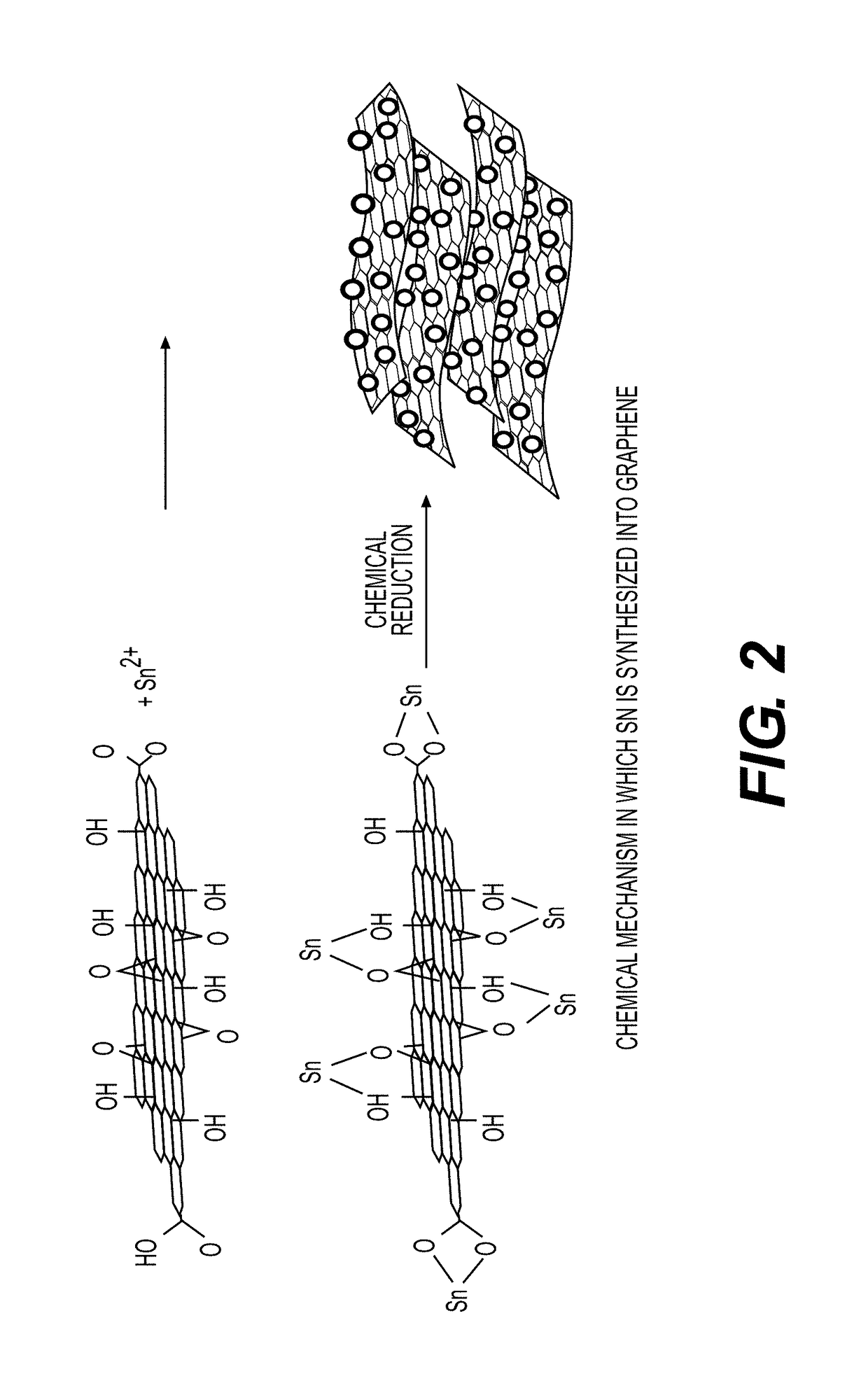Graphene-nano particle composite having nano particles crystallized therein at a high density
a nano-particle, composite technology, applied in the direction of carbon-silicon compound conductors, cell components, chemistry apparatus and processes, etc., can solve the problems of difficult to make use of a single-layer high specific surface area, difficult to form a uniform composite structure, and easy to peel off graphene in solution
- Summary
- Abstract
- Description
- Claims
- Application Information
AI Technical Summary
Benefits of technology
Problems solved by technology
Method used
Image
Examples
example 1
on and Characterization of Graphene-Tin (Sn) Nanoparticle Composite 1-1
[0107]Preparation of graphene-Sn nanoparticle composite.
[0108]Graphene and tin (Sn) powder were mixed for 10 minutes at a mixing ratio of 1:2 to prepare a source powder, and 30 lpm and 50 lpm of argon gas were injected as the central gas and the sheath gas into a radio-frequency thermal plasma device for performing a preparation process according to the present invention. Then, this experiment was performed without injecting a quenching gas.
[0109]Subsequently, a voltage of 17 kW was applied to a power source of a plasma torch to produce high-temperature thermal plasma, and a degree of a vacuum in the device was maintained at 500 torr before injection of a source powder. Then, the source powder mixed with graphene was injected into a radio-frequency thermal plasma reaction unit through an injection nozzle of the plasma producing electrode unit 6, and the graphene in the radio-frequency thermal plasma reaction unit...
example 2
on and Characterization of Graphene-Silver (Ag) Nanoparticle Composite 2-1
[0117]Preparation of graphene-Ag nanoparticle composite.
[0118]Graphene and silver (Ag) powder were mixed at a mixing ratio of 4:1, 2:1, 1:1, and 1:1.5, and stirred for 10 minutes in a mixing machine to prepare a source powder. Then, a graphene-Ag nanoparticle composite was prepared in the same manner as in Example 1-1.
[0119]2-2. FE-SEM Imaging.
[0120]FIG. 4 shows FE-SEM imaging results (the same magnification of 50,000×) of the nanoparticle composite prepared according to a change in mixing ratio between graphene and Ag in the graphene-Ag nanoparticle composite prepared in Example 2-1. From the imaging results as shown in FIG. 4, it could be seen that the size of the silver nanopowder increased with an increase in mixing ratio of the powder. In particular, it was confirmed that silver did not increase a surface are of graphene, but increased the size of the particles bound to a surface graphene, unlike the othe...
experimental example 1
al Bonds
[0124]A graph showing the XRD analysis results capable of determining whether there are chemical bonds is shown in FIG. 3. For example, from the XRD analysis results on the composite of graphene and Sn, it was revealed that the peaks of Sn and C were observed, but the peak of Sn—C was not observed. This is because Sn preferentially binds to an O atom. Since a bond between Sn and O is preferentially formed in the synthetic product of graphene and Sn through the chemical bonds, the Sn—C peak was not observed from XRD.
[0125]As described above, the present invention relates to a graphene-nanoparticle composite having a structure in which nanoparticles are crystallized at a high density in a surface of graphene to form chemical bonds. Therefore, the graphene-nanoparticle composite exhibits excellent mechanical and electric characteristics since the nanoparticles are included at a large amount of 30% by weight or more, and have a high diameter of 200 nm or more. Accordingly, the g...
PUM
| Property | Measurement | Unit |
|---|---|---|
| particle diameter | aaaaa | aaaaa |
| electric conductivity | aaaaa | aaaaa |
| particle diameter | aaaaa | aaaaa |
Abstract
Description
Claims
Application Information
 Login to View More
Login to View More - R&D
- Intellectual Property
- Life Sciences
- Materials
- Tech Scout
- Unparalleled Data Quality
- Higher Quality Content
- 60% Fewer Hallucinations
Browse by: Latest US Patents, China's latest patents, Technical Efficacy Thesaurus, Application Domain, Technology Topic, Popular Technical Reports.
© 2025 PatSnap. All rights reserved.Legal|Privacy policy|Modern Slavery Act Transparency Statement|Sitemap|About US| Contact US: help@patsnap.com



